I have recently noticed that my work process lacks flow. Interruptions are constant, and because of that, it takes me a long time to get anything done. I have felt it necessary to read emails as soon as they come in, or teams messages when they pop up at the moment or answer phone calls. And like most people, I get distracted by my phone. Did you know that people unlock their phones 80-150 times a day? Thankfully, I am not that bad. But I do it enough for it to be a distraction.
Here are some of the things I have learned:
Define your work
- Pick the task that needs your focus. We do not multitask during this time. One task only. If something comes up during that time, write it down on a piece of paper, you will get back to it when you have reached your goal.
- Determine what finished looks like. Is it the completion of the project? Is it two paragraphs written, or one email answered? The goal doesn’t mean total fulfillment. It is a realistic end to today’s session of flow state.
- Make sure you are working in a space that is conducive to getting work done. Just because we are working from home doesn’t mean we can work from our beds. I have tried it (more than once), and it just doesn’t work. Same for the sofa. Being too comfortable doesn’t help flow state. Find a desk and a chair that allows you to sit straight. Makeshift desks are acceptable; a kitchen table and chair will work just as well as a desk, provided that you can sit up and your feet reach the floor.
- Let people know when you need to focus and that they shouldn’t disturb you.
Choose your time
I used to think that I should write in the afternoons because my day was winding down. The truth is someone suggested I write in the afternoons because they thought my day was slower at that time. But I am most alert and creative in the mornings. Specifically between 8 and 10 am. I can work the rest of my day around my writing. If I focus for 40 minutes, I can get the blog post written and then get on with my other duties.
So when I am ready to start writing, I will clear my desk, close my email, and then take a minute to center my energy. You can do this in several ways, but yesterday I discovered the thunderclap method – and that is to rub your hands together to generate some heat, count down from 3, and then clap your hands together like a thunderclap. OK, we are ready to go!
Since my optimal focus time is in the morning, I create a ritual before I start work. I get up, get ready for work – I get dressed, including wearing shoes (shoes are essential for working). I drink some coffee, I write in my journal for 30 minutes and then get another cup of coffee and a glass of water, and then I sit down to work.
Starting today this regime will change slightly. When I am ready for deep concentration, I will block off a 45-minute chunk of time without distractions. Email is closed, notifications are (temporarily) ignored, and I will put aside my phone and remove all distractions.
Background noise
I think we have all figured out by now that having Netflix play in the background while we work doesn’t work. Neither does the news, or whatever else you think is non-intrusive. It’s all a distraction. Even the music I play to energize me when I feel a bit low – is a distraction. But silence isn’t always the best remedy for concentration. But you can find white noise – or whatever colour of noise you like. Google pink noise; you might find that to be more your style.
This morning I found the Lego White Noise playlist on Spotify – and it’s been the soundtrack to this morning’s blog post. Listening to bricks clicking together or spilling onto the floor is the perfect soundtrack to my focus needs.
When you are ready to go back to your day
Don’t be a slave to the inbox. Train yourself to look at your email for the first 5 minutes of every hour. Create a to-do list based on your email. But work off the list. You may find that you will be happier this way. I love crossing things off of a list. It’s so satisfying. Much better than dragging an email into a folder.
One last thing
When you schedule your focus time, be realistic. You aren’t going to be able to do this for hours and hours at a time. Start with 20 minutes. See how you do. Increase or decrease the time based on need. And make sure you schedule breaks. You are going to need them.
Now rub your hands. 3… 2… 1… CLAP
Practice what you have learned.



